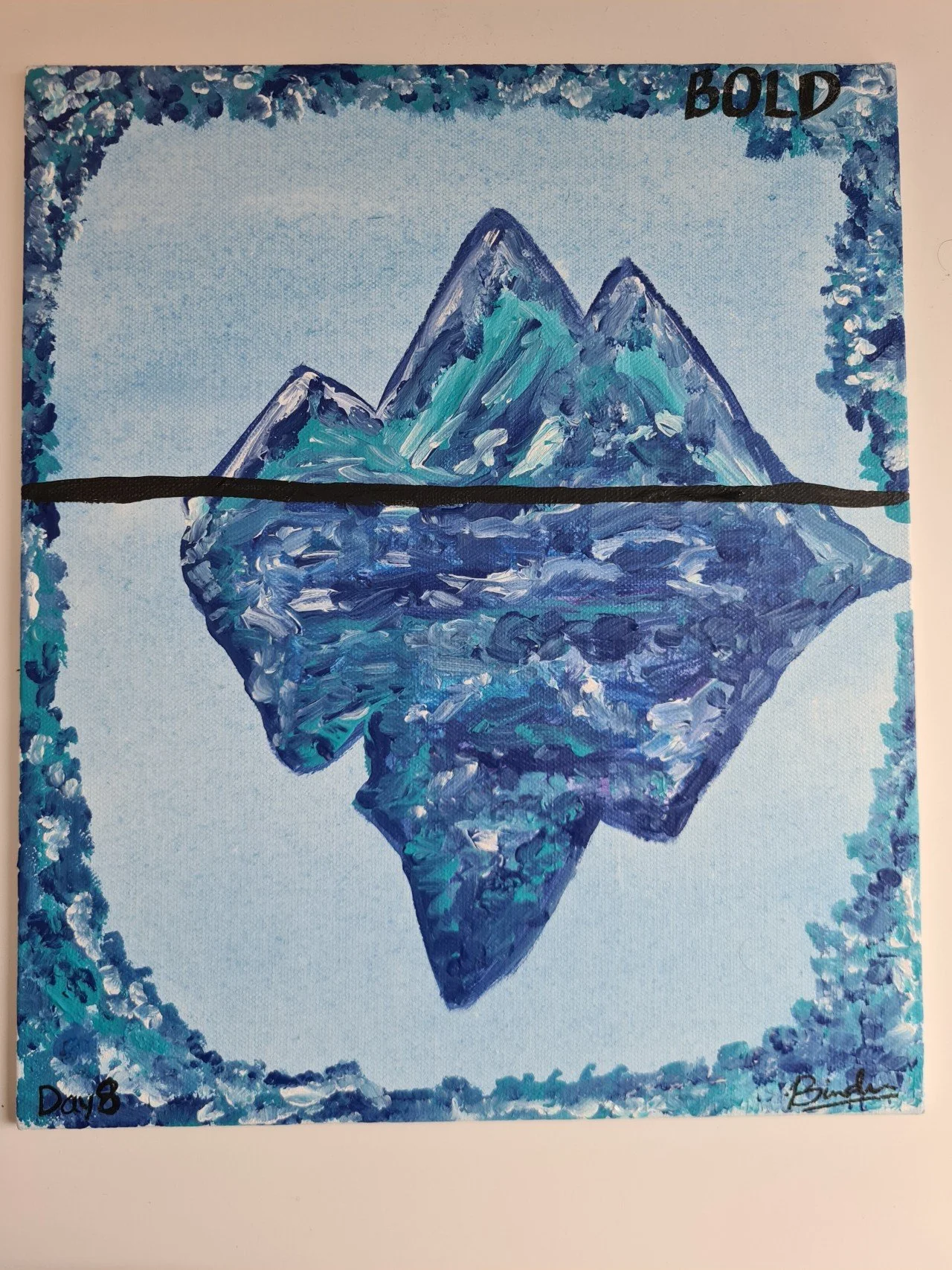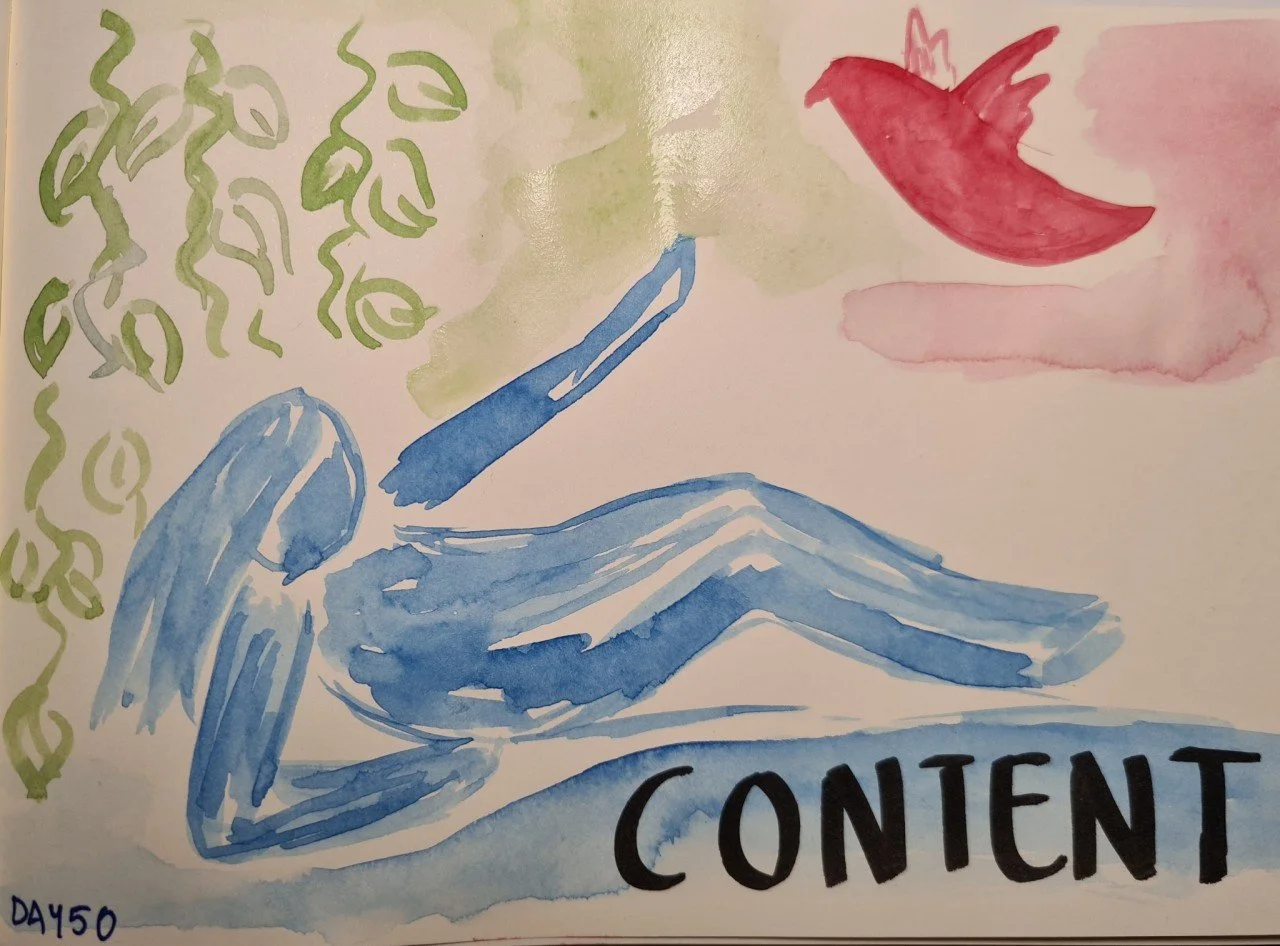100 days of feelings
Back in 2021, I painted my feelings and coping strategies for 100 days straight. Here’s a deep dive into the context, my inspiration, what I did, and most importantly my learnings. I have also linked to resources for you to explore further.
A screenshot from my tumblr page
What was my context
I scheduled my first appointment with a therapist in the 2nd week of March 2020. That week I spent a great deal of time thinking about "how to work from home once every week so I could have this session in a safe space". Closer to the date, we were all told to work from home and all my overthinking wasn’t needed anymore. Since then, I have been on a journey of improving my mental health.
To me, focusing on mental health meant exploring my emotions, experiencing them, and understanding my responses to these experiences.
Being the nerd that I am, it was also about connecting the dots and at times, making peace with the fact that there aren't any dots to connect. It was also about developing better coping strategies for all the emotions that I was confronted with.
2020 & 2021 had been so fast-paced and slow-paced at the same time. The external happenings were slow — I sat at the same desk, met almost the same people, and we even talked about the same things sometimes. It's like a record that's stuck and replaying. The internal happenings however had been fast-paced — Big life decisions, buying a home, changing jobs, health issues, and renewed hobbies.
I also believe that there is a strong need for leaders who are courageous, who can understand their fears, and who can lead by creating a safe space.
For this topic, Brene Brown is my guru. I love her work and would definitely recommend whatever media works for you - audiobooks, books, podcasts, or videos!
What inspired me
I came across Rukmini Poddar’s work - her projects and her drawing style are just so real and grounding. I joined a few online sessions and her 6-week course about Creative Reflection.
I also have weekly check-ins with my partner where we look at the feelings wheel and discuss our past week. We ask questions like “Pick 3 feelings which you felt and describe what happened” or “When was the last time you felt <xyz> feeling”. We also have this card deck from Rukmini which has led to us being amazed and confused at our interpretations of drawings 😀
The global 100-day project was set to start in Jan 2021 and I took that as a sign to start my own project.
What I did
In 2014, when I was uncertain about new opportunities - job, cities, love - I started journaling. I did that for 99 days and documented it all here. It’s even cringey to look at that work now, but hey, that’s growth!
With this knowledge about my past self, I had the confidence to try such a streak once again. So I decided to paint my feelings for 100 days. I set some rules - no more than 5-10 minutes per day; no re-doing the work.
As I started painting feelings, closer to day 50, I thought, what can one do when they feel all the feels but only resort to a few coping strategies?
From Day 51, I decided to paint coping strategies. So in the end it was 50 days of feelings and 50 days of coping strategies.
I also shared regularly on Instagram and people started sharing their feelings and coping strategies. This gave me some new ideas to explore in my drawings.
What I learnt
It’s okay to bend the rules!
If I did not feel like painting on a Friday and felt lazy on a Saturday, I would paint 3 pages on Sunday. I made a conscious choice to finish the 100 days project in 100 days and not stretch it out.
I was dealing with shame and the inner critic’s voice
I used to paint a lot as a child and my technique then was far better than now (practice!!). I constantly compared myself to what I could do when I was younger. This project gave me a strong exposure to making my almost unconscious inner voice heard - and I started engaging with it, almost like having a conversation with another person. The confidence I got via my consistency was also a way to counter my inner voice.
Perfectionist voice can manifest beyond its popular notion
I did not consider myself a perfectionist. I took pride in being the “getting things done” kind of person. This was because of my notion that perfectionists are fixated on being pixel-perfect or making these perfect-looking things. However, perfectionism can manifest in many different ways, and we need to talk about this. Perfectionism is mostly harmful and wrecks havoc on well-being.
I was inspired by one of the women in my drawing class who was bold in her painting style. Sometimes you need to be bold to overcome that perfectionist voice. One way for me to overcome my perfectionism was to draw that black line on this painting.
It might seem silly and not a big deal, however, look at some of your ongoing work and ask yourself, what are you afraid of doing and why?
Always remind yourself of the initial intention
My ambition led me to come up with many ideas on how to take this project further while it was still going on. Initial ideas included making a card deck, a coffee table book, and a website that will help you pair feelings and coping strategies. It’s relatively easier to get lost in these possibilities and start looking into how to create that website or think of how to better capture pictures for print etc. However, these were taking me further away from my initial intention - which was to get into the habit of painting and reflecting on a daily basis. My partner does a fantastic job of reminding me when I am getting ahead of myself.
I need to keep reminding myself at work about intentions because a lot of what I do is around change management. Ask yourself, what’s your intention and how are your actions contributing to that?



